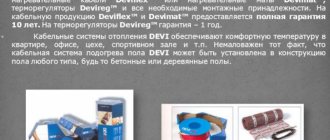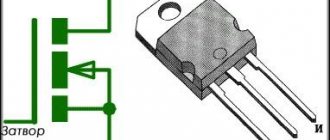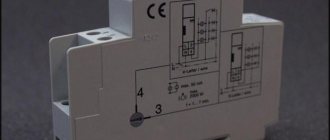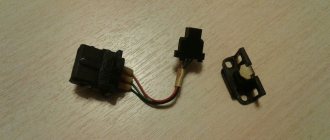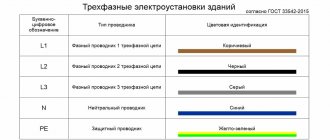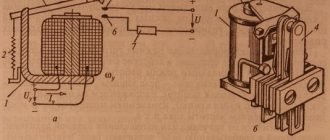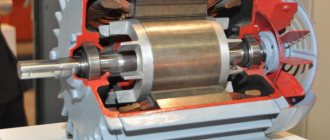Circuit design is a modern and rather complex science with a high threshold for entry in terms of qualification level. Some people try to master it on their own, but, as a rule, it doesn’t go beyond assembling simple electronic circuits and repairing household appliances. To successfully assemble boards on your own, applicants for the title of amateur radio operator must have basic knowledge of physics, as well as be able to correctly determine the rating of a particular electronic component.
If the area of the capacitor or resistor allows, then the main characteristics of the product are almost always marked on such elements, otherwise a novice designer and assembler of devices may encounter insurmountable difficulties. This article will talk about how to find out the capacitance of an SMD capacitor, as well as ways to determine other parameters of this type of product.
What are SMD capacitors
What are SMD capacitors and what are they for?
Many electronic components are large in size and are mounted on the board using wire taps or wide legs, similar to microcircuits. For reliable fixation, the contact elements of such parts are installed in specially made holes, in which they are coated with molten solder to ensure high-quality electrical contact.
Standard installation of radio components
If the power dissipation of resistors or the value of capacitors is too small, then there is no need to make such a product too bulky. Installing elements of this type by drilling the board would force electronic circuit designers to allocate an unreasonably large area of the printed circuit for their installation. The logical solution to this problem is to use SMD components.
SMD technology (Surface Mounted Device) is a method of installing electronic parts without drilling the board. Such a component is simply soldered on one side of the surface, thereby saving significant area without reducing its strength by the presence of a large number of micro-holes.
Note! The surface mounting method can be used to install not only capacitors, but also resistors, transistors and microcircuits.
The use of SMD components allows for maximum optimization of the arrangement of parts on the board. Thanks to the use of this technology, circuits for complex devices can be manufactured in relatively small sizes, which is especially important when designing mobile products.
Calculation of the quenching resistor
In communication equipment circuits, it is often necessary to supply the consumer with less voltage than the source provides. In this case, an additional resistance is connected in series with the main consumer, at which the excess voltage of the source is extinguished. The video shows a simple calculation of a resistor for an LED.
It will be interesting➡ How to read the designation (marking) of resistors
This resistance is called damping resistance. The voltage of the current source is distributed over sections of the series circuit in direct proportion to the resistance of these sections. Let's consider the circuit for switching on the damping resistance:
- The payload in this circuit is an incandescent light bulb, designed for normal operation at voltage Ul = 80 V and current I = 20 mA.
- The voltage at the terminals of the current source U=120 V is greater than Ul, so if you connect a light bulb directly to the source, then a current exceeding normal will pass through it and it will burn out.
- To prevent this from happening, a damping resistance R extinguished is connected in series with the light bulb.
Calculation of the value of the damping resistance at given values of the consumer current and voltage comes down to the following:
– the amount of voltage that must be extinguished is determined:
Next, you need to calculate the power released at the damping resistance using the formula
Knowing the resistance value and power consumption, choose the type of damping resistance
Types of SMD capacitors
Every radio amateur needs to understand the types of capacitors mounted using the surface-mount method. Such products may differ not only in capacity, but also in voltage, so ignoring the conditions for using parts can lead to their failure.
You might be interested in WAGO connectors
Electrolytic components
Electrolytic SMD capacitors do not differ fundamentally from standard products. Such electronic components most often take the form of barrels, in which a thin metal rolled into a cylinder is located under an aluminum housing, and a solid or liquid electrolyte is located between it.
Electrolytic SMD capacitors
The main difference between such a part and a standard electrolytic cell is that its contacts are mounted on a flat dielectric substrate. Such products are very reliable in operation, especially convenient when it is necessary to install a new product with minimal time investment. In addition, during soldering the product does not overheat, which is very important for electrolytic capacitors.
Ceramic components
In ceramic elements, porcelain or similar inorganic materials are used as a dielectric. The main advantage of such products is their resistance to high temperatures and the ability to produce products of extremely small sizes.
Important! SMD ceramic capacitors are also installed by soldering onto a printed circuit board.
Visually, such an element, as a rule, resembles a small brick to which contact pads are soldered at the ends.
Ceramic SMD capacitors
Unlike radio components of standard sizes, SMD elements of small size are first glued to the board, and only then the leads are soldered. In production, ceramic products of this type are installed by special automatic machines.
Marking of tantalum SMD capacitors
Tantalum SMD capacitors are resistant to increased mechanical loads. Such products can also be made in the form of a small parallelepiped, to which contact leads are soldered on the sides. Tantalum is a very durable metal with high ductility. Foil made of this material can have a thickness of hundredths of a millimeter.
For your information! Due to the presence of certain physical properties based on tantalum, it is possible to produce radio components of the highest precision.
Tantalum capacitors
Tantalum capacitors, as a rule, have small housing sizes, so it is not always possible to apply full markings to products made in an “A” size housing. Knowing the designation features of radio components of this type, you can easily determine the rating of the product. The maximum permissible voltage in volts for tantalum products is indicated in Latin letters:
- G - 4;
- J - 6.3;
- A - 10;
- C - 16;
- D - 20;
- E - 25;
- V - 35;
- T - 50.
Note! The capacitance of products is indicated in microfarads after the letter “μ”, and the positive contact is indicated with a thick line.
Standard sizes
Standard sizes of SMD resistors.
The production of a chip resistor is the result of production using film technology. A layer of resistive coating in the form of a film of varying thickness is applied to the substrate. This substrate does:
It is also the foundation. The resistance of such a chip directly depends on the material and thickness of the film coating. The complexity of working with thickness has led to two types of chip resistor manufacturing technology:
The former are sometimes called cermet, due to the metal-oxide composition of the powders. Powder in the form of a paste is applied to the base and screen printing is used. After that, burning is carried out in a furnace, bringing the temperature to 9000 C.
The latter are made using ion vacuum deposition of a nickel-nichrome alloy. This achieves resistance accuracy with a tolerance of 0.01% in both directions.
Both types are ultimately adjusted to the specified resistance values using laser trimming (cutting).
It is difficult to distinguish externally what type of resistor it is. Thick Film Chip Resistors technology is somewhat simpler, which is why such elements are cheaper.
SMD resistor device
A passive two-terminal network with a certain resistance has a different shape. There are the following geometric varieties:
If we talk about the standard size of such circuit components, the JEDEC standard is mainly used. The standard size has a specific code that informs about the dimensions in length H and width W.
Table of sizes of SMD resistors
Expert opinion
Viktor Pavlovich Strebizh, lighting and electrical expert
Any questions ask me, I will help!
Of course, no matter how hard you try, you can’t do without Soviet electronics, and therefore it makes sense to study the markings of such resistors. If there is something you don’t understand, write to me!
Designation of SMD capacitors
To establish the value of an SMD capacitor, you will need to carefully study its markings. On large-sized elements, as a rule, basic information is applied not only about its denomination, but also the manufacturer’s logo is indicated.
You may be interested in Determining the power of a resistor
When figuring out the parameters of small bricks, you will have to spend a certain amount of time, because even if the necessary information is available on their body, it is unlikely that you will be able to see the symbols on their surface with the naked eye.
Important! Depending on the type of capacitor, the designations of its parameters may also differ significantly, which must be taken into account in the work.
Marking of ceramic SMD capacitors
Small ceramic SMD capacitors are marked with an alphanumeric code consisting of 3 characters. The first indicates the minimum operating temperature, for example:
- Z - from 10 °C;
- Y - from −30 °С;
- X - from 55 °C.
Marking of SMD capacitors
The second symbol indicates the upper limit of heating of the radio component:
- 2 - up to 45 °C;
- 4 - up to 65 °C;
- 5 - up to 85 °C;
- 6 - up to 105 °C;
- 7 - up to 125 °C;
- 8 - up to 150 °C;
- 9 - up to 200 °C.
The third character indicates the accuracy of the electronic component:
- A - up to ± 1.0%;
- B - up to ± 1.5%;
- C - up to ± 2.2%;
- D - up to ± 3.3%;
- E - up to ± 4.7%;
- F - up to ± 7.5%;
- P - up to ± 10%;
- R - up to ± 15%;
- S - up to ± 22%;
- T - up to ± 33%;
- U - up to ± 56%;
- V - up to ± 82%.
The capacity of small ceramic SMD capacitors is indicated in picofarads. To save the area of a small radio element, the main mantissa number is encoded in a letter of the Latin alphabet. The table below provides a complete list of such designations.
Table with encoded characters
After the number, the multiplier is indicated, for example, the designation on a ceramic capacitor X3 means that the capacitor has a capacity of 7.5 * 10 ^ 3 Pf.
Note! The code indicating the capacity of a ceramic SMD capacitor may be preceded by a Latin letter, which indicates the brand of the manufacturer of the electronic component.
If the area of this type of ceramic capacitor is large enough, then the dielectric type can be displayed on it. For this purpose the following are used:
- NP0. The dielectric constant of such an element is at an extremely low level. The main advantage of components of this type is their good resistance to sudden temperature changes. The disadvantage of elements that use this type of dielectric is their high price;
- X7R. Average quality dielectric. Products that use this type of insulator do not have excellent breakdown resistance characteristics, but in the average temperature range they are able to work significantly longer than many more expensive elements;
- Z5U. A dielectric with high electrical permeability values, but the downside of this indicator is that the capacitance error is too large;
- Y5V. The insulating material has approximately the same characteristics as Z5U. In terms of cost, this dielectric is the cheapest, so electrical components made on its basis are sold at the lowest prices.
You may be interested in Features of current sources
Burnt SMD capacitor
Considering all of the above, you can be sure that if the SMD capacitor has not burned or changed the color of the surface for other reasons, then you can always determine its value by the markings on its body.
Marking of electrolytic SMD capacitors
Electrolytic capacitors of this type, as a rule, are relatively large in size, so many parameters of such elements are indicated without encryption. That is, the maximum voltage value will be indicated by the number and letter “V”, and the capacitance will be mF.
Marking of electrolytic SMD capacitors
In some cases, the SMD value of an electrolytic type capacitor may also be encoded. Typically, 4 characters (one letter and 3 numbers) are used for this purpose. The first character is the voltage in volts:
- e 2.5;
- G 4;
- J 6.3;
- A 10;
- C 16;
- D 20;
- E 25;
- V 35;
- H 50.
Note! The next three digits encode information about the capacitance of the capacitor (2 digits + multiplier).
Thus, even very small electrolytic SMD capacitors can be marked with information about the main parameters of the product.
A more modern matrix - COB
Chip On Board technology appeared on the market in 2010. The COB matrix consists of crystals placed close to each other on the board (several dozen or more), covered with a common layer of phosphor. This achieves a luminous flux that is more powerful than that of an SMD matrix. COB emits a more uniform light, with which individual dots (crystals) are practically indistinguishable. In addition, the cost of such a matrix is lower.
This solution made it possible to produce light sources of the same power as SMD, but of smaller sizes. Accordingly, there are more opportunities to use this advantage in luminaire design.
With the same dimensions, the COB power is much higher and reaches 100 W, which, with good heat dissipation, allows you to obtain a light output in the range of 100–150 Lm/W (the light output of a 100 W incandescent lamp is about 12 Lm/W).
Better thermal conductivity is achieved by a larger substrate area. In SMD, heat from the diodes flows to the heatsink, passing through the electrodes and the substrate (usually aluminum). In COB, this path is simplified because the chips are mounted directly on a substrate (ceramic or aluminum).
The service life of COB matrices, as stated by manufacturers, is 30-50 thousand hours. This data is obtained through mathematical modeling, since it is impossible to check the operating time at the manufacturing stage. Otherwise, we would have to wait almost 6 years to make sure that the LED works as advertised. This time is enough to invent a more effective model, and the results obtained will lose relevance.
How to choose an LED lamp?
More details!
In order to understand what prospects the invention of an LED matrix of the smallest possible size opens up and why modern technologies strive for this, let’s look at an example.
Let's go back to the time when SMDs were popular, but the capabilities and commercial potential of COB were not yet thought about. The chip with dimensions of 3.5 by 2.8 mm has a power of 0.06 W. In order to design a 50 W lamp, it was necessary to install 50/0.06 = 833 chips in it! And this does not take into account the fact that each chip requires space to dissipate heat, just like the lamp as a whole. It is easy to calculate the approximate dimensions of such a device. It is more difficult to imagine how to use it and who will buy it.
The top picture shows the dimensions of the SMD chip and COB LED. The power of the latter is 50 W, dimensions are 36 x 36 mm. Working with lighting equipment has become easier, the range of products has grown, as evidenced by the range of products from TM Brillet. You can see the product with your own eyes and check its operation in our stores. The site allows you to buy lamps and LED lamps in a few clicks with delivery and a guarantee.
How to determine the capacitance, rating and voltage of SMD capacitors
Above, detailed information was provided on how to correctly determine the rating of SMD capacitors by marking. The main difficulty in performing such an operation is that the characters may be so small that they cannot be identified with the naked eye. In such a situation, it is recommended to use a magnifying glass or any other magnifying device with a suitable magnification, as well as install high-quality lighting in the place where such studies are carried out.
Radio amateur magnifier
Note! Sometimes the markings on the surface of the radio element are not readable or are completely missing, so every radio amateur should know how to determine the capacitance of an electrolytic capacitor without markings. To perform such work, you cannot do without a special measuring device.
How to determine the capacitance of an SMD capacitor without markings using a device
To obtain correct indicators, before starting to measure the capacitance of the capacitor, the radioelement must be completely discharged.
The voltage limit is measured on a capacitor, which is installed in an electronic circuit where the element can be safely connected to electrical voltage. After turning off the current source, measure the voltage at the contacts of the radio component. The resulting value in volts should be multiplied by 1.5 to obtain the exact value of this parameter.
Voltage can be measured with a cheap multimeter
SMD capacitors are very convenient for self-assembly of various circuits, and during automatic installation, thanks to them, it is possible to achieve maximum compactness in the arrangement of radio components. Knowing the principles of deciphering the designation of such elements, you can design and assemble even complex devices at home without any difficulty.
Calculation of the quenching resistor
In communication equipment circuits, it is often necessary to supply the consumer with less voltage than the source provides. In this case, an additional resistance is connected in series with the main consumer, at which the excess voltage of the source is extinguished. The video shows a simple calculation of a resistor for an LED.
It will be interesting➡ How is parallel and series connection of resistors different?
This resistance is called damping resistance. The voltage of the current source is distributed over sections of the series circuit in direct proportion to the resistance of these sections. Let's consider the circuit for switching on the damping resistance:
- The payload in this circuit is an incandescent light bulb, designed for normal operation at voltage Ul = 80 V and current I = 20 mA.
- The voltage at the terminals of the current source U=120 V is greater than Ul, so if you connect a light bulb directly to the source, then a current exceeding normal will pass through it and it will burn out.
- To prevent this from happening, a damping resistance R extinguished is connected in series with the light bulb.
Calculation of the value of the damping resistance at given values of the consumer current and voltage comes down to the following:
– the amount of voltage that must be extinguished is determined:
Next, you need to calculate the power released at the damping resistance using the formula
Knowing the resistance value and power consumption, choose the type of damping resistance
Sequence of actions using the example of an SMD component
Let’s say that on the working printing surface of the electronic unit being repaired there is a burnt-out SMD box that needs to be dismantled. To remove it and install a new one, you need to select a compact nozzle for the hair dryer and prepare flux. The temperature regime on the soldering hair dryer is set within 345-350 degrees using a regulator. Then they apply flux to the part to be replaced, and begin to slowly “warm up”.
The air pressure during the process should not be too strong, otherwise there is a risk of blowing away nearby elements. The culprit of the breakdown continues to be heated until the solder begins to melt, which will be immediately noticeable.
It may take about three minutes to warm up, and this is normal, there is no need to rush. If the solder persists for a long time, you need to add 5 degrees.
After the solder has liquefied, carefully dismantle the SMD part.
During the process, it is important not to knock down neighboring components, since they have probably lost stability due to the melting of the solder holding them in place.
Upon completion of the operation, the copper braid must be used to clean the “spots” (contact pads), then provide small bumps in the same places with solder paste or solder.
A serviceable smd is placed in the old place with a minimum amount of flux. Heat the part with a soldering hair dryer until the solder shines brightly, spreading over each of the contacts.
What services does the contract installation company provide?
Using the services of a contract assembly company can bring a number of benefits to many entrepreneurs in a variety of industries, such as cosmetics, medical, construction, appliances and electronics, or automotive. Third party contract assembly services improve product quality by:
- application of innovative and precise technologies;
- availability of specialized production lines;
- employment of experienced specialists.
On the other hand, entrepreneurs using contract assembly services can increase profits not only by bringing cutting-edge technology solutions to market, but also by not having to maintain their own production line in the face of rapidly changing technology.
Metallization of holes
The ductility of copper deposits should be correlated with the thermal expansion of the base of the boards along the Z axis. It will be clearly greater at higher soldering temperatures with lead-free solders. To resist the expansion of the base and ensure greater strength and greater ductility of copper deposits, it is necessary to more tightly control the plating process of through holes. To ensure heating of through mounting holes to higher temperatures typical of lead-free soldering, it is necessary to ensure appropriate thermal conductivity of the metallization by increasing its thickness. All this forces us to reconsider the requirements for the technology of metallization of printed circuit board holes.
Theory
Soldering refers to the joining of certain metals using other, more fusible ones. In electronics, solder is used for this, which contains 40% lead and 60% tin. This alloy becomes liquid already at 180 degrees. Modern solders are produced as thin tubes, which are already filled with a special resin that acts as a flux. Heated solder can create an internal connection if the following conditions are met:
- It is necessary that the surfaces of the parts that will be soldered be cleaned. To do this, it is important to remove all oxide films that form over time.
- The part must be heated at the soldering site to a temperature sufficient to melt the solder. Certain difficulties arise here when there is a large area with good thermal conductivity. After all, the power of the soldering iron may simply not be enough to heat the place.
- Care must be taken to protect against oxygen. This task can be performed by colophonium, which forms a protective film.
Semiconductor markings
Accurate information is applied to the device body so that the buyer can immediately determine which device is in front of him
This is important, given that inside one case there may be small parts with different parameters
Therefore, they pay attention to identifying SMD components by their markings
Diodes
Usually they are supplied with color markings. At least if the body is cylindrical. Products are marked with colored stripes, in quantities of one or two pieces. The strips are easy to find at the cathode terminal, which is supplied to the diodes.
In a rectangular case, devices are equipped with approximately the same designations. Some manufacturers include different symbols and numbers in their designations.
Zener diodes
Their markings are both color and symbolic. The marking strips are also located closer to the zener diode terminals.
Circuit breakers
LEDs
Typically, SMD LEDs are not provided with additional markings. An exception is for counterfeit goods of low quality. They are often marked with different symbols to make the product look more convincing. There are digital symbols, but they are only needed to see the size of the device. All other information is placed in the accompanying documents. The requirements for marking foreign SMD diodes are set a little differently.
The main thing is to take into account that some devices can be produced in different modifications, with some differences in the main characteristics. Even with the same standard size, different LEDs differ in color and color temperature.
#2 – Raised Components
A raised component that is lifted during wave soldering (pictured)
Having a raised component means that it is lifted off the base of your PCB during the wave soldering process. It ends up looking like a tombstone.
Reasons for this type of problem may be as follows:
- Incorrect component DIP wire length that ends up being lifted when entering the solder bath.
- Wave soldering of a flexible printed circuit board that bends while the components remain flat.
- Use of components that have different thermal or lead solderability requirements.
#3 – Excessive solder
Excess solder accumulates at this joint, notice the round shape. (on the picture). If your board went through wave soldering equipment and required too much solder, then you will get excess buildup
If your board went through wave soldering equipment and required too much solder, then you will get excess buildup.
Notice the rounded shape in the picture and although this excess solder can still form an electrical connection, it becomes difficult to determine what is happening inside this rounded mass. Reasons for over soldering can be due to the following reasons:
Reasons for over soldering can be due to the following reasons:
- Incorrect orientation of components of the same type in the same direction.
- Using the wrong lead length to site ratio during your design process.
- On the manufacturer's side, the conveyor belt may have been running too fast.
Securing parts
It is necessary to place the soldering iron tip between the board and the terminal to heat the place where soldering will be carried out. In order not to damage the part, this time should not exceed 1-2 seconds. Then you can bring the solder to the soldering area. Keep in mind that flux may splash on a person at this stage, so be careful. After the moment when the required amount of solder has time to melt, it is necessary to remove the wire from the place where the part is soldered. To distribute it evenly, you need to hold the soldering iron tip for a second. Then, without moving the part, you need to remove the device. A few moments will pass and the soldering area will cool down. All this time it is necessary to ensure that the part does not change its location. Excess can be cut off using side cutters. But make sure that the soldering area is not damaged.
Multilayer boards
Since equipment with SMD components has a very dense installation, there should be more tracks on the board. Not all tracks fit on one surface, so printed circuit boards are made multilayer. If the equipment is complex and has a lot of SMD components, then the board will have more layers. It's like a multi-layer cake made from short layers. The printed tracks connecting SMD components are located directly inside the board and cannot be seen in any way. An example of multilayer boards is mobile phone boards, computer or laptop boards (motherboard, video card, RAM, etc.).
In the photo below, the blue board is the Iphone 3g, the green board is the computer motherboard.
All radio equipment repairers know that if a multilayer board is overheated, it will swell with a bubble. In this case, the interlayer connections break and the board becomes unusable. Therefore, the main trump card when replacing SMD components is the correct temperature.
Some boards use both sides of the printed circuit board, and the mounting density, as you understand, doubles. This is another advantage of SMT technology. Oh yes, it’s also worth taking into account the fact that the material required for the production of SMD components is much less, and their cost during mass production of millions of pieces literally costs pennies.




